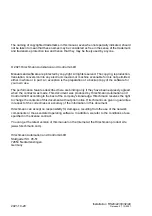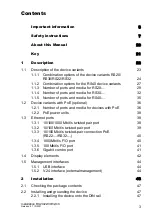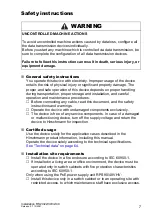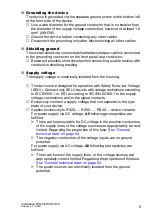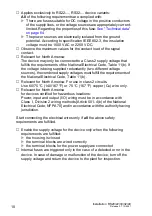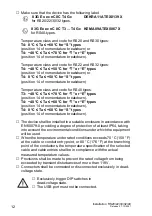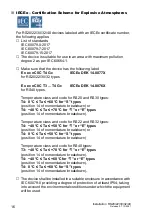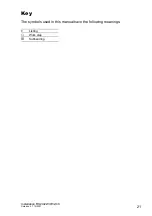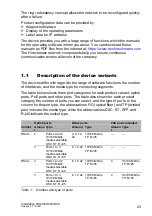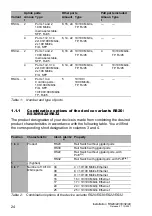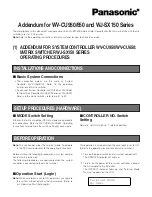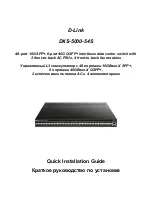
12
Installation RS20/22/30/32/40
Release 07 10/2021
Make sure that the device has the following label:
II 3G Ex ec nC IIC T4 Gc
DEKRA 11ATEX0139 X
for RS20/22/30/32 types.
II 3G Ex ec nC IIC T3 ... T4 Gc KEMA 09ATEX0067 X
for RS40-types.
Temperature class and code for RS20 and RS30 types:
T4: 0 °C
≤
Ta
≤
+60 °C for “S” types
(position 14 of nomenclature breakdown) or
T4:
−
40 °C
≤
Ta
≤
+70 °C for “T” or “E” types
(position 14 of nomenclature breakdown).
Temperature class and code for RS22 and RS32 types:
T4:
−
40 °C
≤
Ta
≤
+50 °C for “T” or “E” types
(position 14 of nomenclature breakdown) or
T4: 0 °C
≤
Ta
≤
+50 °C for “S” types
(position 14 of nomenclature breakdown)
Temperature class and code for RS40 types:
T3:
−
40 °C
≤
Ta
≤
+70 °C for “T” or “E” types
(position 14 of nomenclature breakdown).
T4:
−
40 °C
≤
Ta
≤
+60 °C for “T” or “E” types
(position 14 of nomenclature breakdown).
T4: 0 °C
≤
Ta
≤
+60 °C for “S” types
(position 14 of nomenclature breakdown).
The device shall be installed in a suitable enclosure in accordance with
EN 60079-0 providing a degree of protection of at least IP54, taking
into account the environmental conditions under which the equipment
will be used.
When the temperature under rated conditions exceeds 70 °C (158 °F)
at the cable or conduit entry point, or 80 °C (176 °F) at the branching
point of the conductors, the temperature specification of the selected
cable and cable entries shall be in compliance with the actual
measured temperature values.
Provisions shall be made to prevent the rated voltage from being
exceeded by transient disturbances of more than 119 V.
Connectors shall be connected or disconnected exclusively in dead-
voltage state.
Exclusively trigger DIP switches in
dead-voltage state.
The USB port must not be connected.


